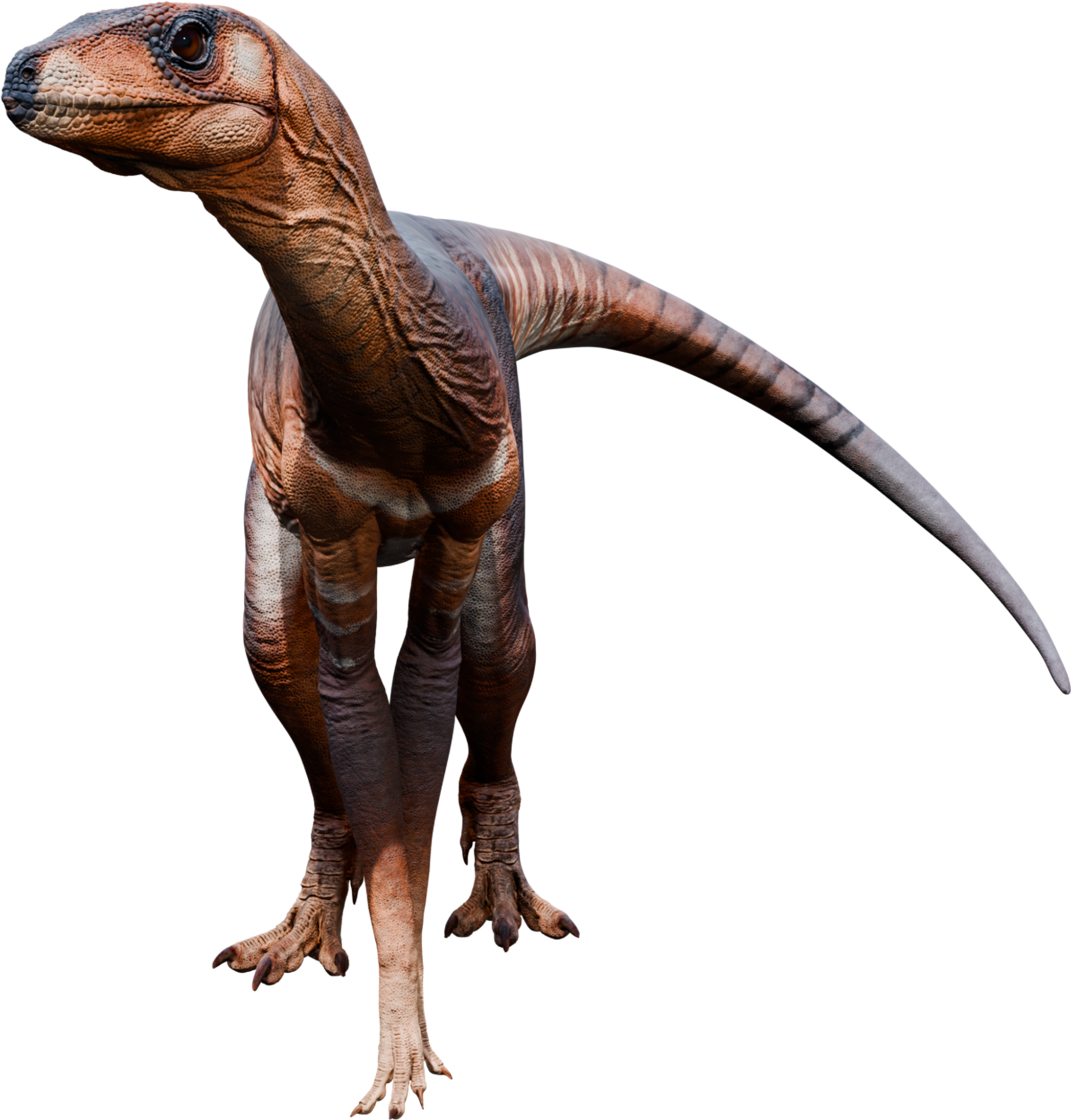Silesia's Almost Dinosaur
This small omnivore hailing from modern-day Poland is not a dinosaur, but a close relative. Known from some 20 specimens, it helps to shed light on the mystery of the the dinosaurs' origin, and the creatures that led up to them!
Overview: Among the many strange and wonderful creatures of the Triassic were the silesaurids, a group of small animals very close to the origin of dinosaurs but were not dinosaurs themselves. The namesake of this group, Silesaurus, was a small omnivore that lived in the seasonally wet subtropical land that is now Poland. This rather unassuming creature, named in 2003, is known from some 20 specimens and sheds additional light on the evolution of the dinosaurs, and the creatures that led up to them, though much about the origin of both silesaurids and dinosaurs remains shrouded in mystery.
Discovery: Silesaurus was discovered in the Late Triassic rocks of the Keuper Claystone of Silesia, Poland, near the city of Opole. In 2003, it was named by Polish paleontologist Jerzy Dzik. Silesaurus means “Silesia Lizard” named for the historical Silesia region of modern-day Poland, formerly Germany/Prussia, where it was discovered. The species name opolensis references the city of Opole. Silesaurus is known from around 20 skeletons, making it one of the best represented non-dinosaurian dinosauriformes.
Evolution: Silesaurus was a member of the family Silesauridae. Silesaurids were archosaurs and avimetatarsalians, being closer to dinosaurs and pterosaurs than to crocodiles. Within Avemetatarsalia, silesaurids are very close to the origin of dinosaurs. They are members of the clade Dinosaurifomes and sit just outside of Dinosauria. While they shared many traits with dinosaurs, they also lacked some key dinosaurian traits. For instance, silesaurids had a closed acetabulum (hip socket) whereas one of the main defining traits of Dinosauria is a perforate acetabulum. The exact origin of silesaurids isn’t entirely clear. They probably appeared around 245 million years ago but their early fossil record, like that of the dinosaurs, is shrouded in mystery. An alternate hypothesis states that silesaurids are in fact true dinosaurs and are a paraphyletic evolutionary grade of the earliest ornithischians. By this hypothesis, silesaurids didn’t go extinct per se, but simply evolved into ornithischians as they are traditionally recognized. However, this hypothesis is not generally accepted, and silesaurids as non-dinosaurian dinosauriforms is still the more accepted hypothesis.
Description: Silesaurus was a lightly built and fairly small animal, reaching lengths of about 2.3 m (7.5 ft). Unlike early dinosaurs, it was probably a quadruped, walking on all four limbs. It had a relatively long neck so that at a glance, it might have looked like a miniature “low-carb” sauropod. Its snout was narrow, and it had small serrated conical teeth, except for in the front of the mouth, which was toothless and covered in a keratinous beak resembling those of many ornithischian dinosaurs. Like its dinosaur relatives, it was probably a quick, agile, and active animal.
Ecology: Early silesaurids were carnivores, but Silesaurus itself was somewhere between an herbivore and an insectivore. Studies on Silesaurus coprolites (fossil feces) confirm that it ate insects, including the beetle Triamyxa. Silesaurus lived in what is now Poland about 230 million years ago. Back then, Poland enjoyed something similar to a warm subtropical climate with dry winters and wet monsoonal summers. Ferns were especially abundant and may have formed an important part of Silesaurus’s diet. It shared its environment with early pterosaurs, lungfish, temnospondyls, and phytosaurs, the latter two of which may have been predators of Silesaurus. The large Polish rauisuchian Polonosuchus was also probably a predator of Silesaurus.
Extinction and Legacy: It is unknown exactly when or why Silesaurus went extinct. But it likely had to do with the changing and increasingly harsh climate of Triassic Pangea as well as competition from other archosaurs, in particular, dinosaurs. Nevertheless, silesaurids as a group apparently managed to coexist with their dinosaur cousins until about 203 million years ago near the end of the Triassic, at which point silesaurids disappeared, along with many other groups of Triassic animals. Today, Silesaurus can be found, both as fossils as well as a hypothetical life reconstruction, in the Museum of Evolution of Polish Academy of Sciences in Warsaw, Poland.
Silesaurus FAQ
Silesaurus size / How big was Silesaurus?
See height, weight, and length.
Silesaurus weight / How much did Silesaurus weigh?
The weight/mass of Silesaurus is unknown, but it was fairly small and lightly built. It may have weighed less than a human.
How long was Silesaurus?
Silesaurus was about 2.3 meters (7.5 ft) in length.
Silesaurus Height / How tall was Silesaurus
Silesaurusprobably stood about 0.83 meters (2.72 ft tall).
What did Silesaurus eat?
Silesaurus was a small herbivore and insectivore, eating low growing plants and insects like the beetle Triamyxa.
What is Silesaurus’s closest living relative?
As close relatives of the dinosaurs, the closest living relatives of Silesaurus are the one remaining lineage of dinosaurs, the birds.
Silesaurus family members / Silesaurus family / What kind of animal was Silesaurus?
Silesaurus was a member of the family Silesauridae, which were early members of Dinosauriformes, which includes dinosaurs and their close relatives. Thus Silesaurus was closely related to early dinosaurs, but not a true dinosaur itself.
Where did Silesaurus live? / Where was Silesaurus found?
Silesaurus lived in central Europe and has been found in the region of Silesia in Poland.
When did Silesaurus live?
Silesaurus lived about 230 million years ago in the Late Triassic Period.
What does Silesaurus mean? / Silesaurus name meaning
Silesaurus means “Silesia Lizard”, named for the historical region of Silesia in which it was found, part of modern-day Poland, and formerly a part of Germany/Prussia.

